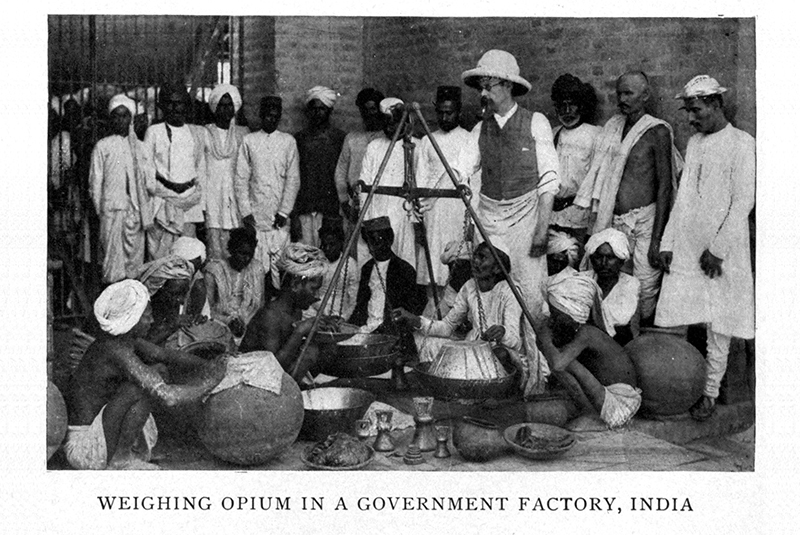Opium, known as Ahiphena (Snake’s venom) in Sanskrit, has been on the Indian subcontinent since Alexander the Great introduced it to the region in 330 B.C.
For centuries, it was a low-key narcotic, prescribed by medical treatises such as the Shodal Gadanigrah and Sharangdhar Samahita for treating diarrhoea. In India and much of the world, opium was consumed rather than smoked, resulting in a distinct side effect – acute constipation.
Culturally, it wasn’t seen as a very big deal. The Mughal elites took to it – Babur, Humayun, Akbar, and Jahangir alike – although Humayun and Jahangir are reputed as addicts (though this was not necessarily true in Humayun’s case). By Shah Jahan’s time, it was a popular recreational drug at the Mughal Court. Over the years of Mughal rule, opium-use shifted from public displays of wanton consumption to a more private affair – at least among the elites.
Towards the beginning of the colonial era, Opium began to spread from its major producers in the Bihar. In the Malabar, labourers and soldiers consumed it, the former to relax and the latter to stay alert during battles. It was known to be used to enhance sexual activity. At the time, the archaeologist John Marshall declared that the best opium was to be had from Patna.
-30-
Copyright©Madras Courier, All Rights Reserved. You may share using our article tools. Please don't cut articles from madrascourier.com and redistribute by email, post to the web, mobile phone or social media.Please send in your feed back and comments to [email protected]











